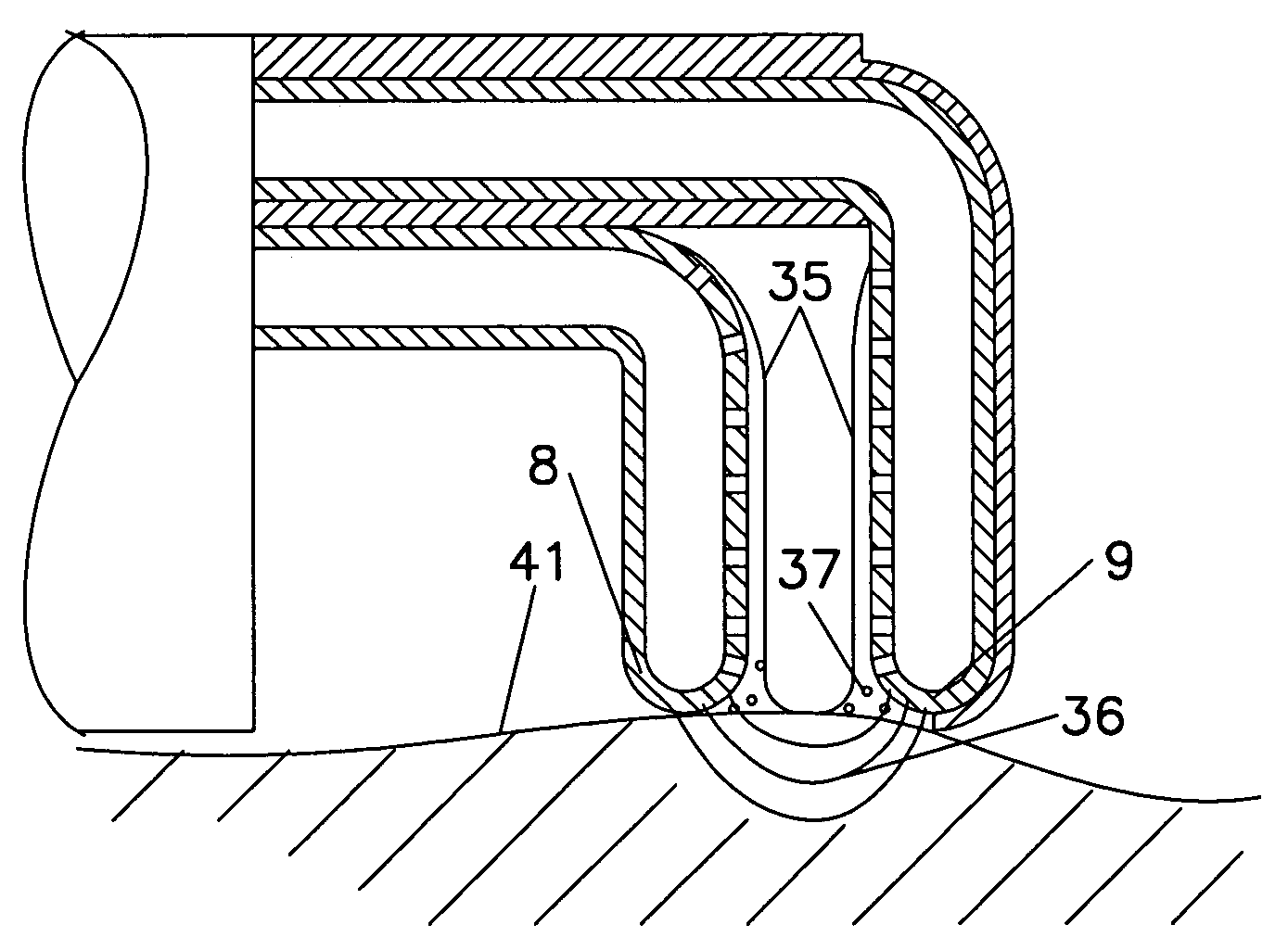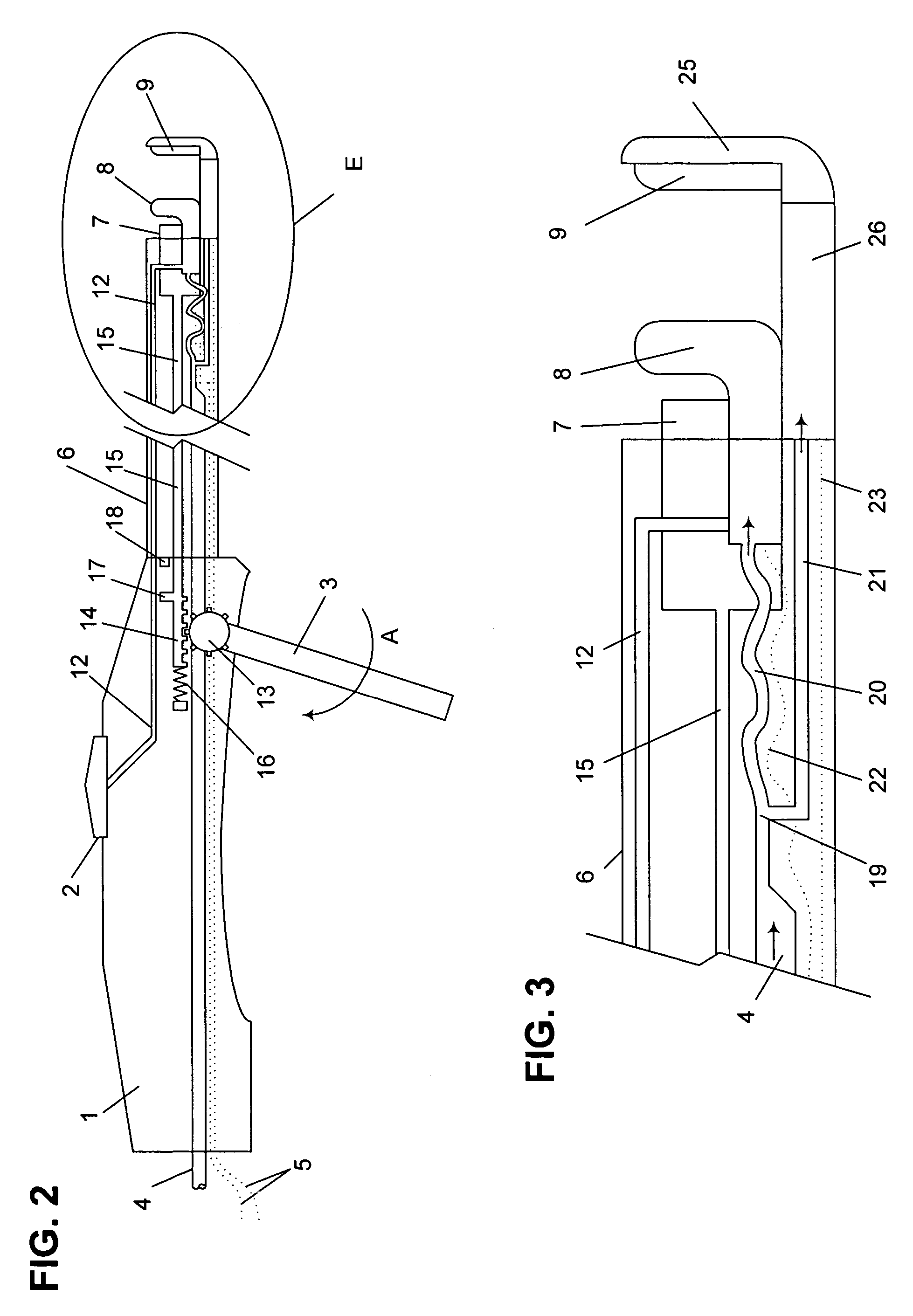Fluid-assisted medical device
a technology of fluid-assisted medical devices and electrodes, which is applied in the field of electrosurgical devices and methods of treating body tissues, can solve problems such as tissue desiccation, tissue sticking to electrodes, and unintended thermal damage to tissue,
- Summary
- Abstract
- Description
- Claims
- Application Information
AI Technical Summary
Benefits of technology
Problems solved by technology
Method used
Image
Examples
Embodiment Construction
[0055]The invention provides a medical device that comprises a first electrode and a second electrode, wherein the electrodes are disposed coaxially to each other, and at least one of the electrodes is translationally movable. Preferably, the first electrode is provided on a first arm, and the second electrode is provided on a second arm of the device. According to the invention, the device comprises at least one translationally movable arm that can be selectively movable to a fixed position. Preferably, the device includes a locking mechanism, to allow the operator to move at least one arm of the device to a desired position and lock the arm in that position. Each electrode is provided with conductive solution. In a preferred embodiment, the electrodes include at least one groove to assist in delivery of the conductive solution to tissue.
[0056]In a preferred embodiment, the invention provides a medical device comprising a housing having a proximal and a distal end; a tubular member...
PUM
 Login to View More
Login to View More Abstract
Description
Claims
Application Information
 Login to View More
Login to View More - R&D
- Intellectual Property
- Life Sciences
- Materials
- Tech Scout
- Unparalleled Data Quality
- Higher Quality Content
- 60% Fewer Hallucinations
Browse by: Latest US Patents, China's latest patents, Technical Efficacy Thesaurus, Application Domain, Technology Topic, Popular Technical Reports.
© 2025 PatSnap. All rights reserved.Legal|Privacy policy|Modern Slavery Act Transparency Statement|Sitemap|About US| Contact US: help@patsnap.com



